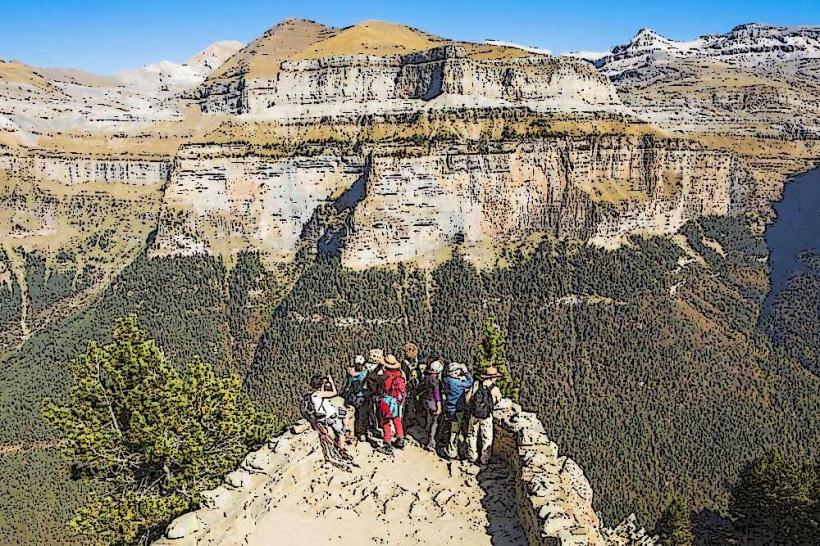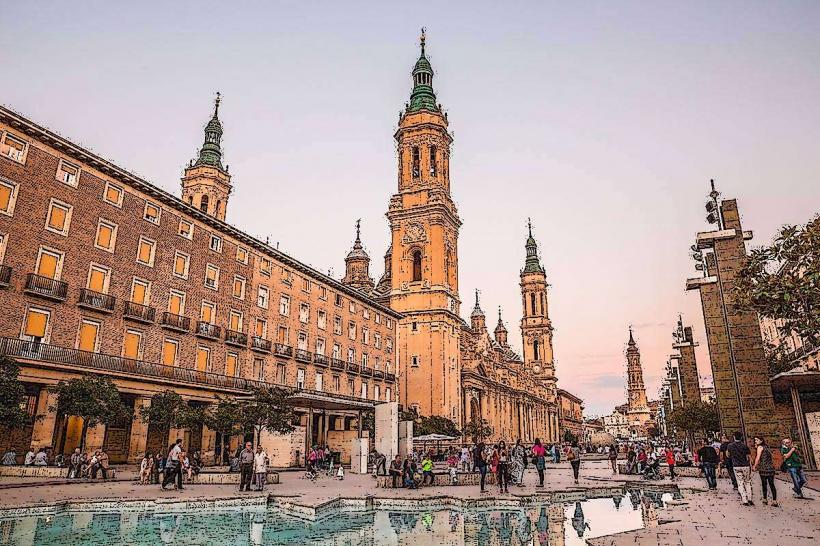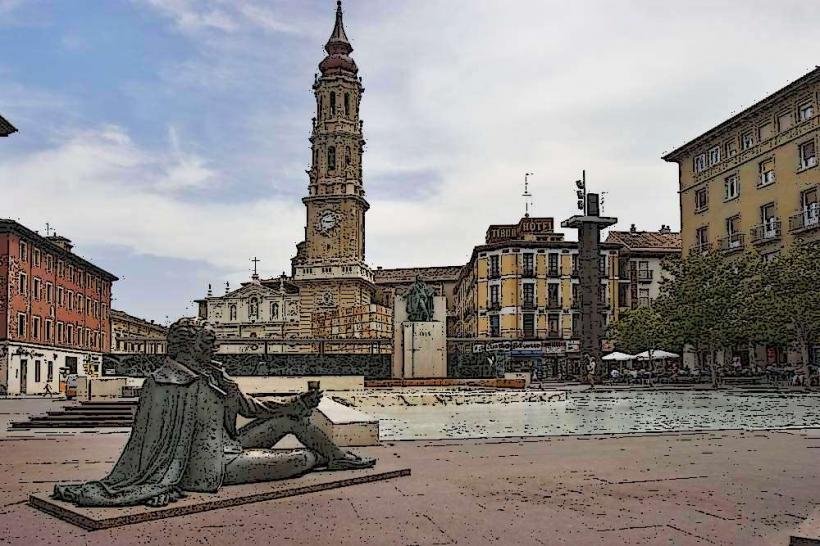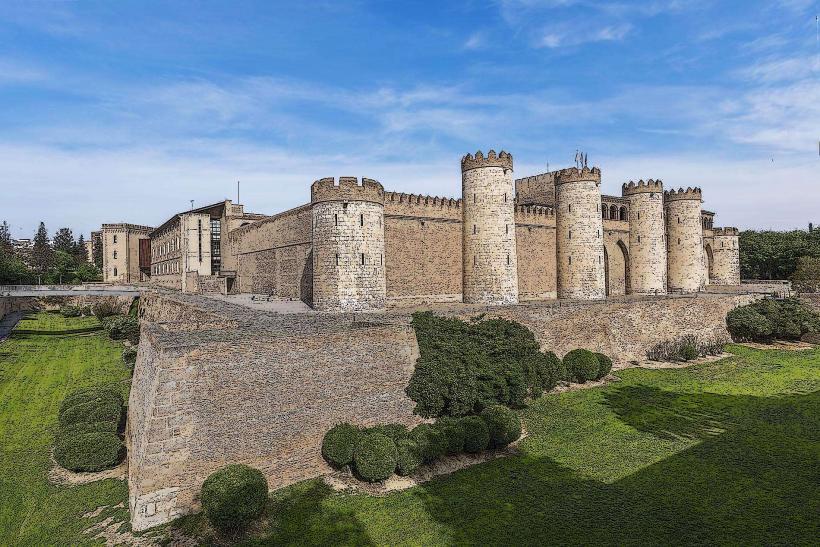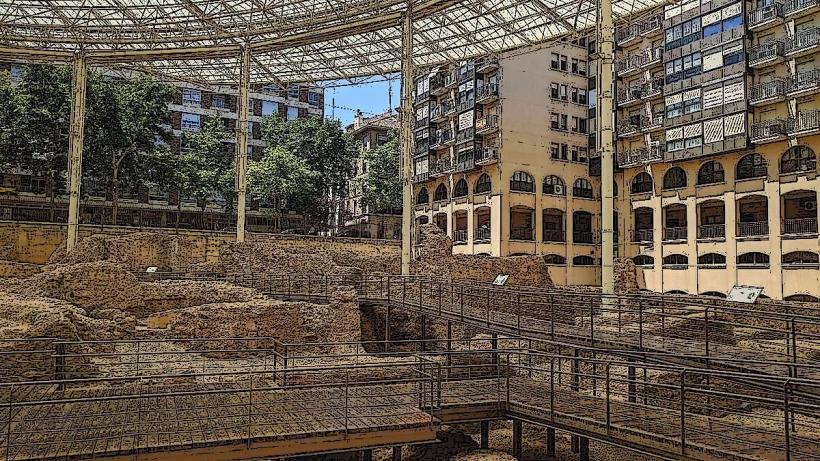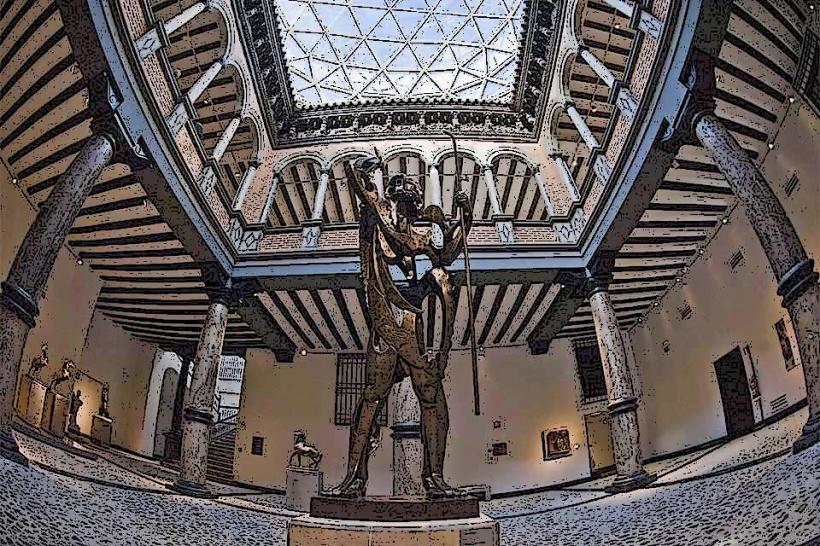Information
Landmark: Ebro River and BridgesCity: Zaragoza
Country: Spain
Continent: Europe
The Ebro River is the longest river in Spain, flowing from the Cantabrian Mountains in the north through a diverse range of landscapes and regions, eventually emptying into the Mediterranean Sea. The Ebro has played a central role in the history, economy, and culture of northern Spain, especially in cities like Zaragoza, where it has shaped both the geography and the development of the area. Along its course, the river is spanned by several significant bridges, which not only serve as vital transportation links but also stand as architectural landmarks.
The Ebro River
The Ebro River flows for over 900 kilometers, winding through northern Spain and crossing the regions of La Rioja, Navarre, Aragon, and Catalonia, before reaching the Mediterranean. In Zaragoza, the river forms a striking visual landmark that divides the city into two halves. The Ebro is crucial for the local agriculture, as its waters support irrigation systems, particularly in the Ebro Valley, which is one of Spain's most productive agricultural regions.
Historical Importance of the Ebro
The Ebro River has had a profound impact on the region throughout history:
- Roman Era: During Roman times, the Ebro was an important route for trade and military movements. The river was crucial for connecting the Roman provinces in Spain with the rest of the Empire.
- Medieval Period: The river was a barrier and strategic asset for various rulers, and many castles, bridges, and fortified towns sprang up along its banks.
- Modern Times: The Ebro remains central to the region's economy and urban planning, with several cities like Zaragoza, Logroño, and Tortosa built on or near the river's banks. It also played a significant role during the Spanish Civil War.
Bridges of the Ebro River in Zaragoza
In Zaragoza, the Ebro River is spanned by several bridges, each with its own historical significance and architectural style. The city's bridges are not only functional but also represent the city's growth and development over the centuries.
1. Puente de Piedra (Stone Bridge)
- History: The Puente de Piedra is one of the most famous and historic bridges in Zaragoza, often considered the city’s symbol. Its construction began in the late 16th century during the reign of King Philip II and was completed in the 18th century. The bridge connects the old town with the modern city.
- Architecture: This stone bridge has six arches and is built in a classic Renaissance style, showcasing the durability and craftsmanship of the period. The bridge is particularly iconic for its views of the Basilica del Pilar.
- Landmark: On the bridge’s southern end, there is a statue of Saint James, symbolizing the Christian tradition of the Camino de Santiago, as the bridge historically played a role in pilgrimage routes.
2. Puente del Pilar (Pilar Bridge)
- History: This bridge, completed in 1983, was built in a modern style to cope with the increased traffic demands in the city. It connects the main city center with the Expo area.
- Architecture: The Pilar Bridge is a contemporary structure made of steel and concrete, with a series of arches that reflect modern engineering.
- Cultural Significance: It is named after the Basilica del Pilar, which dominates the views from the bridge. This bridge is a key access route to the Pilar Basilica and the old town of Zaragoza.
3. Puente de la Zuda
- History: The Puente de la Zuda was originally a Roman bridge and has undergone numerous reconstructions over the centuries. It connects the La Zuda district with the Plaza del Pilar area, one of the busiest in the city.
- Architecture: The Roman bridge was adapted through the Middle Ages, and the existing structure today reflects Medieval and Baroque influences.
- Landmark: This bridge is part of the old city wall, providing both practical access and historical significance.
4. Puente de los Remedios
- History: The Puente de los Remedios was constructed in the 20th century as part of a major expansion to accommodate the growing urban sprawl of Zaragoza. It was intended to ease the flow of traffic and provide access between key parts of the city.
- Design: It is a modern bridge that blends well with the surrounding urban landscape, reflecting the dynamic growth of Zaragoza during the industrial era.
5. Puente de la Almozara
- History: Completed in 2008, the Puente de la Almozara is a recent addition to Zaragoza’s extensive bridge network. It crosses the river between the La Almozara neighborhood and the Delicias district.
- Design: The bridge features a unique cable-stayed structure with bold, modern lines and is often admired for its aesthetic appeal and engineering innovation.
- Modern Importance: This bridge plays a crucial role in modern transportation by connecting key neighborhoods and alleviating traffic congestion in the central parts of the city.
6. Puente de Santiago
- History: The Puente de Santiago was built as part of the improvements made in the early 21st century to modernize the city’s infrastructure.
- Design: The bridge is distinctive for its curved design, making it visually different from other bridges in the city. It was designed to fit harmoniously with the landscape of Zaragoza and its historic surroundings.
- Functionality: The bridge connects the south of Zaragoza to the city center, helping to ease traffic flow, especially for commuters.
Other Notable Bridges of the Ebro
While the bridges mentioned above are the most prominent in Zaragoza, the Ebro River is spanned by many others in different regions of the river’s course. Some of the other notable bridges across the Ebro River include:
- Puente de la Reina (Bridge of the Queen) in Navarre, famous for its medieval history and pivotal role in the Camino de Santiago pilgrimage route.
- Puente de Tortosa in Tortosa, another historic bridge in the Catalonia region, which has been rebuilt several times over the centuries.
Importance of the Ebro River and Its Bridges
The Ebro River and its bridges have been crucial for the economic development, cultural exchange, and transportation networks of the regions it flows through. The bridges, old and new, reflect the historical significance of the river while serving as modern landmarks. They are not only functional elements of the city's infrastructure but also symbols of Zaragoza's historical transformation, linking the past with the present.
Visitors to Zaragoza can explore these bridges and the beautiful Ebro River, experiencing both the natural beauty of the riverbanks and the architectural splendor of the bridges that span its waters. Each bridge tells a story of the city’s development, from its Roman origins to its modern growth.

